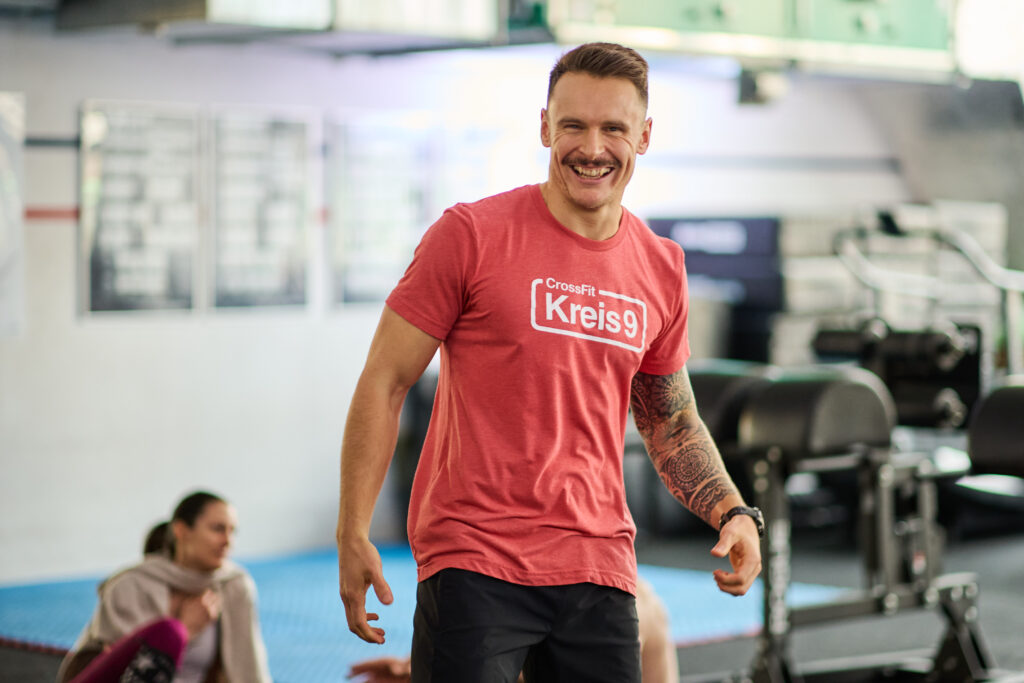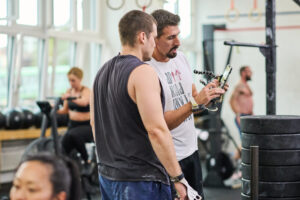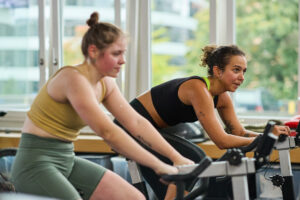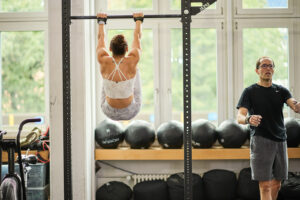Exercise snacking is one of the simplest ways to improve health and fitness — especially for busy people who don’t always have the time or mental energy to fit in long workouts. The idea is exactly what it sounds like: instead of doing one big “meal” of exercise, you break movement into small, manageable “snacks” throughout the day.
At CrossFit Kreis 9, we coach many professionals and parents whose days are packed from early morning until late evening. For them, exercise snacking can be a game-changer — not to replace structured training, but to build a foundation of daily movement and energy.
What is exercise snacking?
Exercise snacking refers to short bouts of physical activity — typically lasting 1 to 10 minutes — performed several times per day. These can be spontaneous (taking the stairs, walking during calls) or deliberate (doing a quick set of air squats, push-ups, or lunges between meetings).
The key idea is accumulation. Just like small nutritional snacks add up to your daily intake, short movement breaks add up to meaningful physiological benefits. Studies have shown improvements in cardiovascular fitness, glucose control, muscle strength, and mental well-being — all from breaking up sedentary time with short bursts of movement.
Why exercise snacking works
One of the biggest barriers to consistent exercise is time. Many people think that if they can’t train for an hour, it’s not worth doing anything. That’s simply not true.
Exercise snacking works because:
- It lowers the entry barrier. Doing a set of squats or a short walk requires no special setup or motivation.
- It reduces sedentary time. Sitting for long stretches is harmful even for those who train regularly. Movement “snacks” keep your metabolism active throughout the day.
- It improves consistency. You’re more likely to maintain small daily habits than sporadic long workouts.
- It enhances recovery. Light activity increases blood flow, reduces stiffness, and promotes faster recovery between training sessions.
At CrossFit Kreis 9, we often tell members: “The hour in the gym is only 4% of your day. What you do in the other 96% matters, too.”
Coaches snack all day
As coaches, we experience exercise snacking first-hand — often without even realizing it. During classes, we move constantly: demonstrating movements, adjusting positions, joining warm-ups, and showing progressions.
A coach at CrossFit Kreis 9 can easily accumulate hundreds of small movement snacks per week just by doing their job. Over the course of a year, that can mean up to 3,000 extra squats and 200 extra pull-ups, purely from demonstrating exercises.
It’s a great reminder that small movements add up. Just like members benefit from incorporating short bouts of activity throughout the day, coaches stay strong and mobile through the same principle — by moving often and consistently.

What exercise snacking can look like
There’s no single formula for exercise snacking, but here are a few practical examples:
- Morning routine: 20 air squats, 10 push-ups, and a 1-minute plank before your first coffee.
- Workday breaks: walk around the block, take the stairs instead of the elevator, or perform 10 jumping squats between Zoom calls.
- Evening reset: a short mobility flow or a set of single-leg deadlifts while brushing your teeth.
- Commuter snack: park farther away or get off public transport one stop earlier and walk the rest.
These micro-sessions accumulate. Five 5-minute sessions equal 25 minutes of movement — enough to influence your energy, posture, and long-term health markers.
How it connects to CrossFit training
For CrossFit athletes and recreational members alike, exercise snacking is not meant to replace structured training. Instead, it enhances it.
When you move frequently throughout the day, your joints stay lubricated, your muscles remain active, and your recovery between sessions improves. You also build a deeper relationship with movement — it becomes part of your lifestyle, not just a scheduled task.
We’ve seen that members who add small bursts of movement outside the gym tend to progress faster inside the gym. They move better, recover better, and often experience fewer aches from long workdays.
If you want to learn more about training frequency and recovery, check out our post: How much should you train?
How to start exercising in “snacks”
- Pick one movement you enjoy and can do anywhere — squats, push-ups, planks, step-ups, or even brisk walking.
- Set reminders or pair it with existing habits. For example, every time you make coffee, do 10 squats.
- Keep it short. 1–5 minutes is enough. The goal is to move, not to sweat buckets.
- Gradually build consistency. Start with one snack per day, then add more.
- Combine with strength training. If you already attend CrossFit classes, use exercise snacking to keep your body active between sessions — especially on rest days or travel days.
Over time, these micro-workouts can turn into one of your most powerful health habits.
The bottom line
Exercise snacking is not a trend; it’s a practical strategy for a modern lifestyle. It bridges the gap between “all or nothing” thinking and the reality of busy schedules.
At CrossFit Kreis 9, we see daily movement as the foundation of a sustainable, healthy life. Whether you’re a parent juggling family logistics or a professional glued to your laptop, adding small movement breaks can help you feel more energetic, more focused, and more resilient.
Start with one exercise snack today — and see how it changes your body and your mindset.




